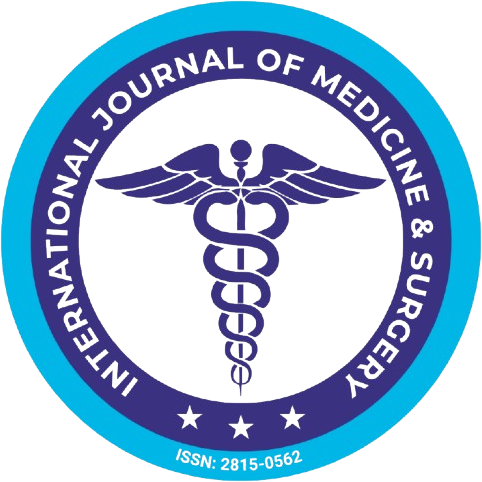A COMPARATIVE STUDY ON THE EFFECT OF INTRASULCULAR VERSUS PARAMARGINAL INCISION DESIGN ON INTERPROXIMAL BONE LOSS OF TEETH ADJACENT TO SINGLE IMPLANTS
ARTICL HISTORY- Date of Submission: Mar 21, 2025, Revision: April 18, 2025, Acceptance: May 09, 2025; DOI:https://doi.org/10.56815/ijmsci.v5i1.2025.71-84
Keywords:
Single implants, Intrasulcular incision, Paramarginal incision, Marginal bone lossAbstract
Dental implants represent a contemporary and reliable method for replacing lost teeth, providing patients with both functional restoration and improved aesthetics. The long-term success of these implants is largely determined by the condition of the marginal bone that surrounds them. Consequently, strategies focused on maintaining the integrity of the crestal bone and minimizing its resorption are essential for ensuring the stability and durability of dental implants. Aims: The objective of this research is to radiographically compare and assess the influence of two incision techniques—intrasulcular and paramarginal—on the condition of marginal bone surrounding single dental implants. Materials and Methods: “The comparative clinical study was carried out in the Department of Oral and Maxillofacial Surgery at Oxford Dental College, Bangalore, following approval from the Institutional Ethics Committee.” A total of twenty-four patients who required prosthetic rehabilitation for a single missing tooth were included in this investigation. The participants were randomly divided into two equal groups. In Group A, dental implants were placed using the intrasulcular incision method, whereas in Group B, the paramarginal incision technique was applied. “Radiovisiography (RVG) was employed to evaluate and monitor the marginal bone levels surrounding the dental implants.” Both clinical and radiographic evaluations were performed at three time points: baseline, three months post-loading, and six months post-loading, in order to compare treatment outcomes between the two groups. Statistical analysis: "Data analysis was carried out using either the Independent Student’s t-test or the Mann–Whitney U test, with statistical significance determined at a threshold of P < 0.05." RESULTS: Marginal bone loss was evaluated in both groups at baseline, 3 months, and 6 months following loading. Across all time intervals, Group A demonstrated slightly greater mean bone loss compared to Group B. Nonetheless, the magnitude of these differences remained minimal, with p-values ranging between 0.50 and 0.75. This indicates that no statistically significant variation in bone loss was observed between the two groups throughout the study period. CONCLUSION: The investigation assessed marginal bone loss following Intrasulcular and Paramarginal incision approaches at different time intervals. Both techniques revealed progressive bone reduction, with early fluctuations more noticeable in the Intrasulcular group. Although the Intrasulcular approach showed slightly more pronounced bone alterations, the variation between the two incision techniques was not statistically meaningful. Overall, both methods were found to be equally effective in maintaining long-term marginal bone stability.










 IJMSCI is a Peer-Reviewed Journal and valid as per New UGC Gazette regulations
IJMSCI is a Peer-Reviewed Journal and valid as per New UGC Gazette regulations








